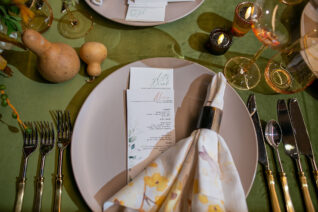This post may contain affiliate links, please read our disclosure policy.
Love wine but don’t know a lot about it? Here are 5 easy steps for getting comfortable with wine tasting, talking about wine, and learning about new wines.
Basic Wine Information For Beginners | Wine Basics
Entering the world of wine appreciation can be intimidating, but it doesn’t have to be. All that is required to appreciate wine is an open mind, a few bottles of wine and a few easy steps. So let’s get started exploring the wonderful world of wines.
Step 1. Study a Favorite
For beginners whose experience with wine has, to this point, been limited to the under $10 price point, it is essential to determine why they choose the wines they do. If a person regularly buys the popular, widely-available CK Mondavi and Family brand wine for about $8 a bottle, they should purchase several varieties of CK Mondavi and Family to compare. For instance, the crisp, slightly sweet CK Mondavi and Family Pinot Grigio, a white wine, tastes completely different from the similarly-colored yet crisper and citrusy-er, CK Mondavi and Family Sauvignon Blanc. Another CK Mondavi and Family white wine, the Chardonnay, tastes entirely different from both the Pinot Grigio and Sauvignon Blanc. I recommend grabbing all three so that you can taste the differences.
Step 2. Explore Alternatives
After determining which variety is preferred, a beginner should expand beyond their comfort zone by purchasing the same variety at the same price point but from a different vineyard or winemaker. For instance, if the CK Mondavi and Family Pinot Grigio was preferred, the next step is to try other similarly priced Pinot Grigios.
Additionally, as CK Mondavi and Family is grown in California, it is important to try the preferred variety from other wine regions from around the world. Pinot Grigio can grow in New Zealand, Australia, Italy, and South Africa, among other places. Purchasing a wine journal and notating the subtle differences can help determine which country’s Pinot Grigio you ultimately favor.
Step 3. Understand the Very Basics of Wine
There are several common-sense principles about wine to learn and keep in mind when wine tasting:
- All wine is made from two main ingredients: grapes and yeast. Grapes + Yeast = Wine.
- The different soils, climates, and aging processes used in different countries impact the taste, aromas, acidity, and texture of the wine. A tannat wine grown in France tastes noticeably different from a tannat grown in Uruguay.
- White wine is made from grapes that have had their skins removed. Red wine is made from grapes with their skins left on, making them richer in antioxidants.
- Many wines are “blends,” meaning they contain more than one kind of grape (for example, a Shiraz/Cabernet blend is made from Shiraz grapes and Cabernet grapes). Wines that are made from only one kind of grape are called “varietals.”
Step 4. Step Outside the Box
The way wine is aged has an impact on its flavor: wine aged in stainless steel barrels maintain their natural flavor, while wines aged in oak barrels take on some of the oak-flavor, lending vanilla, smoky, or cedar taste. Some people dislike oak-aged wines; some people prefer them. When you determine your preference, it can help you know which wines to look for.
If you have narrowed your preference down to a certain variety of wine, you will begin to understand what to look for in exploring new wines. One should never paint themselves into a corner when it comes to tasting wine; simply determine what is liked best about the favorites, and look for it in other varieties. There is a world of wines to explore and appreciate!
Step 5. Host a Wine Tasting
Wine lovers enjoy sharing their favorites with their friends, and hosting a wine tasting at home is a fun alternative to beer & chips parties. Cut up some cheese, pour out tastings, and pass out an index card to gauge guests’ reactions to the wines poured.
It’s interesting to learn how different people can react to the same wines. Where one person tastes leather, another may taste pepper or smoke. All it costs is three or four bottles of wine, a few wedges of cheese, and a box of crackers for a fun, unique party your guests, will remember. Plus, everyone will learn a bit more about wine!
Once you have learned more about what kinds of wines you enjoy, here are a few more wine tips to help further your wine appreciation and knowledge:
What is one of your favorite types of wine? How did you learn to appreciate and discover new wines?
Be sure to check out Food Wine Sunshine on Facebook, Twitter, Pinterest, and Instagram for more wine tips, cocktails, healthy recipes, and fun things to do.









Comment section